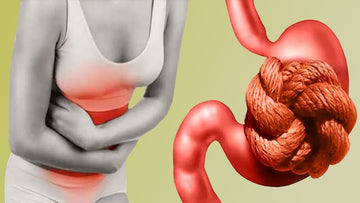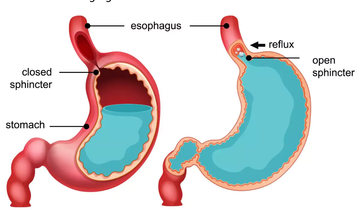
In Ayurveda, Aama refers to a toxic by product formed due to improper digestion. The term “Aama” literally means “undigested” or “raw.” It is considered a primary cause of various diseases and is formed when the digestive fire (Agni) is weak, leading to incomplete digestion of food. This undigested food turns into a sticky, toxic substance that circulates in the body, blocking channels (srotas), and causing imbalance in the doshas (Vata, Pitta, and Kapha).
• Improper Diet: Consuming heavy, oily, fried, or incompatible foods that are difficult to digest can lead to the formation of Aama.
• Irregular Eating Habits: Eating at irregular times, overeating, or eating before the previous meal is digested contributes to Aama formation.
• Mental and Emotional Stress: Stress can weaken Agni, leading to impaired digestion and the formation of Aama.
• Fatigue and lethargy
• Indigestion and loss of appetite
• Coated tongue
• Foul-smelling breath and sweat
• Joint pain and stiffness
• Frequent colds and allergies
• Constipation or diarrhea
• Aama in the joints can cause rheumatoid arthritis (Amavata).
• Aama in the respiratory tract can lead to conditions like asthma or bronchitis.
• Aama in the digestive tract may result in chronic indigestion, bloating, and other gastrointestinal issues.
1. Dietary Modifications:
• Light and Easily Digestible Foods: Foods that are easy to digest, like warm soups, khichadi (a mixture of rice and lentils), and steamed vegetables, are recommended.
• Spices: Spices like ginger, cumin, coriander, and turmeric can help to ignite the digestive fire and aid in digestion.
• Avoid Aama-Forming Foods: Heavy, oily, fried foods, dairy products, and cold or refrigerated foods should be avoided.
2. Herbal Remedies:
• Trikatu: A combination of black pepper, long pepper, and ginger is effective in stimulating digestion and burning Aama.
• Panchakola: A combination of five herbs (Pippali, Pippalimoola, Chavya, Chitraka, and Shunthi) helps in digesting Aama.
• Guduchi (Tinospora cordifolia): Known for its detoxifying and immune-boosting properties, Guduchi helps in eliminating Aama.
• Triphala: A combination of three fruits (Amalaki, Bibhitaki, Haritaki) is used to cleanse the digestive system and remove Aama.
3. Panchakarma Therapies:
• Vamana (Therapeutic Emesis): Induces vomiting to eliminate Aama from the upper digestive tract.
• Virechana (Purgation): Cleanses the bowels and eliminates Aama from the lower digestive tract.
• Basti (Medicated Enema): Helps in detoxifying the colon and removing Aama from the body.
• Swedana (Fomentation): Steam therapy helps in liquefying Aama, making it easier to eliminate.
4. Fasting (Langhana):
• Fasting is an effective way to burn Aama by giving rest to the digestive system and allowing the body to detoxify naturally.
5. Lifestyle Changes:
• Regular Exercise: Light exercises like yoga and walking can help to improve digestion and burn Aama.
• Stress Management: Practices like meditation and pranayama can help in managing stress, which is a contributing factor to weak digestion.
• Maintain a Regular Eating Schedule: Eat at regular times and avoid eating late at night.
• Follow Seasonal and Dosha-Specific Diets: Adjust your diet according to the season and your dosha constitution to maintain a healthy digestive fire.
• Avoid Stress: Practice relaxation techniques to keep your mind and body balanced.
By addressing Aama through these Ayurvedic practices, you can prevent and treat various diseases, promoting overall health and well-being.
Formation of Aama
• Weak Digestive Fire (Mandagni): When the digestive fire is weak, food is not properly digested.• Improper Diet: Consuming heavy, oily, fried, or incompatible foods that are difficult to digest can lead to the formation of Aama.
• Irregular Eating Habits: Eating at irregular times, overeating, or eating before the previous meal is digested contributes to Aama formation.
• Mental and Emotional Stress: Stress can weaken Agni, leading to impaired digestion and the formation of Aama.
Symptoms of Aama
• Heaviness in the body• Fatigue and lethargy
• Indigestion and loss of appetite
• Coated tongue
• Foul-smelling breath and sweat
• Joint pain and stiffness
• Frequent colds and allergies
• Constipation or diarrhea
Aama as a Root Cause of Diseases
According to Ayurveda, Aama is a root cause of many diseases. When Aama circulates in the body, it can lodge in different tissues, causing various disorders. It vitiates the doshas and obstructs the proper functioning of channels (srotas), leading to diseases. For example:• Aama in the joints can cause rheumatoid arthritis (Amavata).
• Aama in the respiratory tract can lead to conditions like asthma or bronchitis.
• Aama in the digestive tract may result in chronic indigestion, bloating, and other gastrointestinal issues.
Treatment of Aama in Ayurveda
Treating Aama involves eliminating the toxins from the body, improving digestion, and balancing the doshas. The treatment plan typically includes the following:1. Dietary Modifications:
• Light and Easily Digestible Foods: Foods that are easy to digest, like warm soups, khichadi (a mixture of rice and lentils), and steamed vegetables, are recommended.
• Spices: Spices like ginger, cumin, coriander, and turmeric can help to ignite the digestive fire and aid in digestion.
• Avoid Aama-Forming Foods: Heavy, oily, fried foods, dairy products, and cold or refrigerated foods should be avoided.
2. Herbal Remedies:
• Trikatu: A combination of black pepper, long pepper, and ginger is effective in stimulating digestion and burning Aama.
• Panchakola: A combination of five herbs (Pippali, Pippalimoola, Chavya, Chitraka, and Shunthi) helps in digesting Aama.
• Guduchi (Tinospora cordifolia): Known for its detoxifying and immune-boosting properties, Guduchi helps in eliminating Aama.
• Triphala: A combination of three fruits (Amalaki, Bibhitaki, Haritaki) is used to cleanse the digestive system and remove Aama.
3. Panchakarma Therapies:
• Vamana (Therapeutic Emesis): Induces vomiting to eliminate Aama from the upper digestive tract.
• Virechana (Purgation): Cleanses the bowels and eliminates Aama from the lower digestive tract.
• Basti (Medicated Enema): Helps in detoxifying the colon and removing Aama from the body.
• Swedana (Fomentation): Steam therapy helps in liquefying Aama, making it easier to eliminate.
4. Fasting (Langhana):
• Fasting is an effective way to burn Aama by giving rest to the digestive system and allowing the body to detoxify naturally.
5. Lifestyle Changes:
• Regular Exercise: Light exercises like yoga and walking can help to improve digestion and burn Aama.
• Stress Management: Practices like meditation and pranayama can help in managing stress, which is a contributing factor to weak digestion.
Prevention of Aama Formation
• Eat According to Your Digestive Capacity: Avoid overeating and eat only when hungry.• Maintain a Regular Eating Schedule: Eat at regular times and avoid eating late at night.
• Follow Seasonal and Dosha-Specific Diets: Adjust your diet according to the season and your dosha constitution to maintain a healthy digestive fire.
• Avoid Stress: Practice relaxation techniques to keep your mind and body balanced.
By addressing Aama through these Ayurvedic practices, you can prevent and treat various diseases, promoting overall health and well-being.




